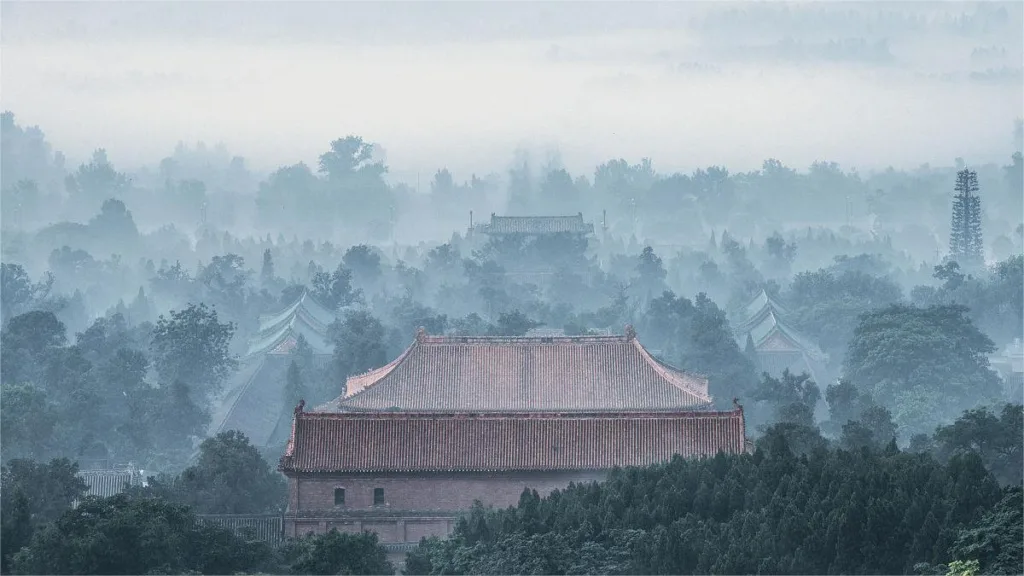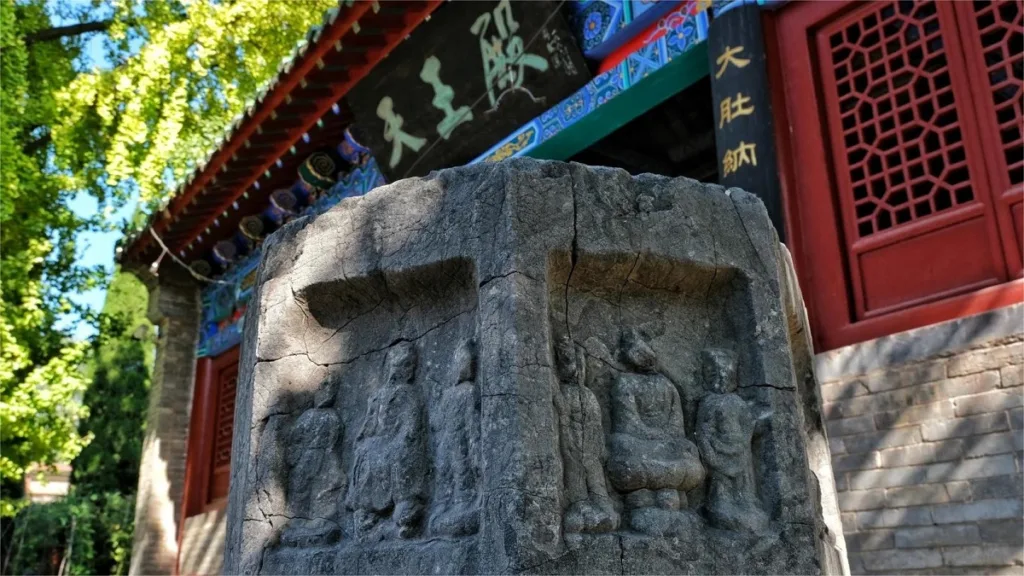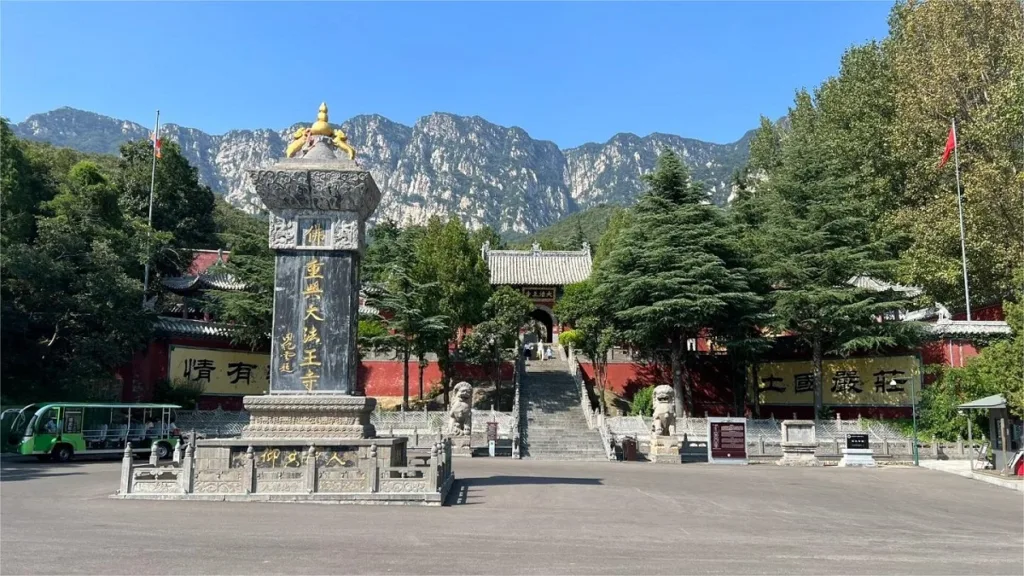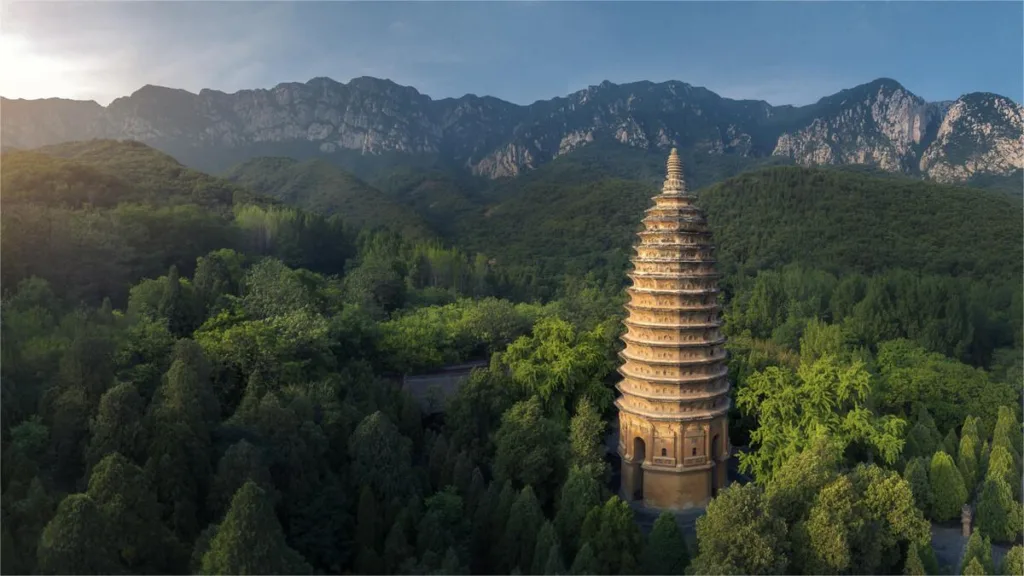Huishan Temple (会善寺), originally established during the reign of Emperor Xiaowen of the Northern Wei Dynasty (471-499 AD) in Henan Province, serves as a significant center for Buddhist ordination in the ancient region of Songshan Mountain. Alongside Shaolin Temple, Fawang Temple, and Songyue Temple, it is renowned as one of the four major temples of Mount Song. Oriented from north to south, the temple complex comprises two main sections: the Western Courtyard with 11 buildings and the Eastern Courtyard with 7. Notably, the Mahavira Hall, constructed during the Yuan Dynasty and extensively renovated thereafter, boasts remarkable architectural features with deep eaves and grand brackets, representing the only surviving example of Yuan Dynasty wooden structures in the Songshan area.
Within the temple grounds, visitors can explore more than 30 inscribed stone tablets, including the Eastern Wei Dynasty’s “Songyue Temple Stele” and the Northern Qi Dynasty’s “Huishan Temple Stele,” along with over 120 ancient trees dating back to the Tang Dynasty. Additionally, a large iron bell from the Ming Dynasty and five Qing Dynasty brick pagodas adorn the surroundings, while to the west stands the pagoda of Master Jingzang from the Tang Dynasty.
Table of Contents
- Basic Information
- Location and Transportation
- Highlights of Huishan Temple
- Vlog about Huishan Temple
- Other Attractions in Taishi Mountain
Basic Information
| Estimated Length of Tour | 1 hour |
| Ticket Price | 40 RMB |
| Opening Hours | 8.00 – 17.30 |
| Telephone Number | 0086-0510-83039899 |
Location and Transportation
Huishan Temple is situated at the southern foot of Mount Song, approximately 6 kilometers north of Dengfeng City, Zhengzhou, Henan Province, China. To reach the temple, visitors can take the No. 1 bus to Xishili Stop (西十里站) in Dengfeng and then proceed on foot to Huishan Temple.
Highlights of Huishan Temple
Mahavira Hall

The main highlight of Huishan Temple is its Mahavira Hall, which spans five bays wide and three bays deep, featuring a single-eave gable roof with gray tiles and green glazed tile ridges. The roof is adorned with large bracket sets underneath, showcasing remarkable craftsmanship. Inside, the hall follows a reduced-pillar construction style. The central bay of the hall’s facade is adorned with a partition door, while the other four bays feature partition windows. Originally constructed during the Yuan Dynasty, the hall has undergone numerous renovations, yet it still preserves elements from its original Yuan Dynasty structure, including the wooden framework and the large bracket sets beneath the eaves.
Master Jingzang Pagoda

Another notable highlight of Huishan Temple is the Pagoda of Master Jingzang, situated to the west of the temple grounds. This pagoda, built in the fifth year of the Tang Dynasty’s Tianbao era (746 AD), stands as a testament to ancient craftsmanship and Buddhist reverence. Constructed from brick, the pagoda features a single-story, single-eave octagonal design, with a height of 10.3 meters. Its base stands at 2.6 meters high, supporting a simple square pedestal reminiscent of a Buddhist stupa. The waist section of the pedestal displays three horizontal pot-shaped doors on each side.
The octagonal pagoda body above mimics the architectural style of Tang Dynasty wooden pavilions, with pillars adorning each corner. The southern side hosts a single-gated entrance leading into the pagoda chamber, featuring an octagonal floor plan and a domed ceiling. Intricately carved imitation timber doors adorn the eastern and western sides, while a stone inscription detailing the life of Master Jingzang adorns the northern face.
Decorative lattice windows grace the remaining four sides, with bracket sets crowning each corner pillar. Above the pagoda body rises a series of ornate eaves, adorned with decorative carved bricks depicting lotus flowers, banana leaves, and other motifs. At its peak, the pagoda is capped with a stone-carved lotus pedestal and a flame-shaped finial, symbolizing enlightenment.
Zhongyue Songyang Temple Stele

The “Zhongyue Songyang Temple Stele” in Huishan Temple was erected in the second year of the Tianping era (535 AD) during the Eastern Wei Dynasty under Emperor Xiaojing. This stele bears intricate carvings of six coiled dragons and Buddha images, with their claws forming an archway enclosing a niche containing a solitary Buddha statue. On the southern face of the stele, twelve layers of Buddha figures are depicted, with the upper eleven layers each featuring eight Buddhas and the bottommost layer adorned with six Buddhas, totaling 94 Buddhas in all.
The northern face of the stele portrays a central large Buddha statue within a divine niche, surrounded by several smaller Buddha statues. Flanking the niche are flying celestial beings with serene expressions and ample physiques. The side relief patterns of the stele are intricately crafted and meticulously arranged. The exquisite craftsmanship, graceful lines, and balanced composition of this stele make it a rare gem among ancient stone carvings on Mount Song.







